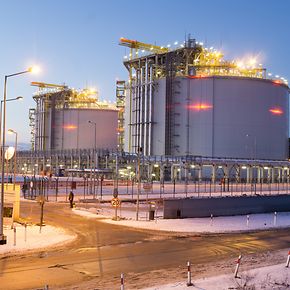From a global perspective, China became the largest gas importer this year with 40% growth/anticipated growth between 2017 and 2023. With the shale revolution occurring here in the United States, shale gas production accounts for 45% of the overall growth in natural gas production and is expected to contribute to 75% of the growth in LNG production between 2017 and 2023.
From a consumption standpoint industrial usage (from ethylene and petrochemical plants under development) is replacing power generation as the largest growth area for natural gas. The growth in global LNG supplies is turning gas into a commodity much like the oil markets. By 2040, 25-35 more countries are expected to be LNG importers. This trend will require additional regasification facilities to convert the LNG back to natural gas for distribution in these countries.
 Given the changes in global supply and demand, the traditional long-term financial agreements for LNG suppliers and customers is changing to be more spot market driven. This change affects the final investment decisions and risk profiles for new LNG capacity for the market. Another trend is the development of regional LNG trading hubs and spot market aggregators to help level global LNG prices.
Given the changes in global supply and demand, the traditional long-term financial agreements for LNG suppliers and customers is changing to be more spot market driven. This change affects the final investment decisions and risk profiles for new LNG capacity for the market. Another trend is the development of regional LNG trading hubs and spot market aggregators to help level global LNG prices.
Automation plays a large role in the LNG supply chain. Beyond the controls and asset management for the liquefaction plants, the LNG carriers which transport the LNG require integrated vessel automation systems—operator displays, power management, motor control centers, load control, engine management, etc.) They also require accurate and repeatable custody transfer systems, fire & gas detection systems, ballast control, and cargo control for marine tank management, load/offloading operations, and safety system.
One final trend Chuck highlighted was the move from marine bunker & diesel fuels to LNG for use as a transportation fuel. Currently, LNG is cheaper than diesel, cleaner burning, easier to achieve regulatory compliance, and easier on the engines due to lower emissions. The fueling infrastructure is not as pervasive as existing fuels but is growing rapidly. Engine technology for LNG fuels is also improving.
Other forms of transportation & industries also trending away from diesel toward natural gas include heavy duty trucks, rail transportation, mining operations, and upstream exploration & production operations.
Visit the Gas Processing & LNG section of Emerson.com for more on technologies and automation solutions for safe, reliable and efficient operations. You can also connect and interact with other oil & gas upstream and midstream industry experts in the Oil & Gas group in the Emerson Exchange 365 community.





